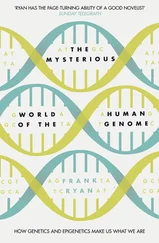Here, in the cells of their natural hosts, viruses are born, like all other life forms. Moreover, they can die. When we treat viral illness with viricidal drugs, our purpose is to kill viruses, much as we use bactericidal drugs to kill bacteria. And, perhaps most important of all, the powerful forces of evolution apply to viruses, just as they do to all other life forms. That is why it is so difficult to cure people infected with viruses. If a virus was nothing more than an inert collection of chemicals, there would never have been an AIDS pandemic. The human immune system would have mopped them up from the circulation without any difficulty.
It is clearly important that we take the trouble to understand viruses. We all know that this is important to medicine in combating viral illness in people. It is important also to veterinary medicine in combating diseases in animals, as it is to agriculture in combating diseases in plants. But there is another, even more profound, reason why we should take the trouble to understand viruses. My subsequent researches, and those of virologists such as Luis Villarreal and Marilyn Roossinck, have made it increasingly evident that viruses have played a key role in the evolution of life, from its very beginnings on Earth to the magnificent diversity we see today. Nowhere has the contribution of viruses been more significant than in the evolution of the human species. Perhaps most amazingly of all, this creative role in human evolution and disease has been played by viruses with a very close resemblance to HIV-1.
I realise that these will appear to be startling claims. When I first proposed such novel concepts, they provoked a heady mixture of bafflement and denial. The reaction was hardly surprising since, if I was right, it appeared to threaten the hegemony of the so-called “synthesis theory”, the trilogy of principles that has stood fast for more than seventy years as the theoretical foundation of modern Darwinism.
What [The Double Helix] conveys … is how uncertain it can be, when a man is in the black cave of unknowing, groping for the counters of the rock and the slope of the floor, listening for the echo of his steps, brushing away false clues as insistent as cobwebs to recognise that something important is taking shape .
HORACE FREELAND JUDSON 1
A key proposition that has been almost universally misinterpreted among non-scientists as the core of Darwin’s theory is the concept known as the “survival of the fittest”. Nothing could have more alienated religious sensibility, with its potential for misapplication to society, for example its misuse in condoning laissez-faire politics in relation to poverty and hunger, and worst of all its extrapolation to racial and ethnic abuse. It is important, therefore, to clarify the fact that Darwin did not invoke the term. On the contrary, the concept of survival of the fittest was the brainchild of the social philosopher Herbert Spencer, who first proposed it in his book, Principles of Biology , published in 1864. 2Spencer had been developing his own thread of thought even before he read Darwin’s Origin of Species , which was published some five years before his own Principles of Biology , but the social philosopher was not educated in biology, and, although his concept was widely seen as synonymous with, or even a clearer exposition of, what Darwin was supposed to have meant by his term “natural selection”, Spencer misunderstood Darwin’s scientifically grounded theory, and he misapplied it as an endorsement of his sociological philosophy. The scientific historians, and philosophers, who have examined Spencer’s ideas have concluded that he saw evolution as a purposeful progression of the physical world, including all biological organisms, the human mind, and human culture and society. Unfortunately it was Spencer’s sociological concept of survival of the fittest, as opposed to Darwin’s scientific concept of natural selection, that led to the inaptly named Social Darwinism of the early nineteenth century, with all of its unfortunate ramifications.
There was never any true scientific foundation to Spencer’s ideas, but since they conveniently fitted with some of the prevailing prejudices of class, and the ethnic and racial bias of the late nineteenth century, extending into the first half of the twentieth century, they became deeply ingrained and influenced political and social belief. It is tragic that Spencer’s ideas still influence a lot of non-scientists today, so that one frequently hears the expression “survival of the fittest” raised in defence or excuse of some prejudicial action. So ingrained did Spencer’s ideas become that, during his lifetime, Darwin himself was put under a lot of pressure, by Spencer and others, to change his basic premise, but, although he briefly flirted with Spencer’s idea, he quickly recovered his senses and returned to his original concept.
Why am I making such a fuss of this when it might be argued that a similar concept of “fitness” is central to Darwinian theory even today? Of course fitness is a core concept to evolutionary biology, but this Darwinian expression is far from the judgemental notion proposed by Spencer. What then did Darwin really imply with his theory of evolution by means of natural selection, and how does the Darwinian concept of “fitness” differ from Spencer’s notion of “the survival of the fittest”?
Admirers of David Attenborough’s Blue Planet series will have observed how, in the warmth of summer, the female Atlantic lobster, a species that can grow up to 20 kilograms in weight, decides that the time has come to lay her eggs. She has already mated – often this happens as soon as she has moulted – but for seven months she has skulked from view in the freezing, deeper waters of the ocean, safe from predators and winter storms and patient in her determination to choose the most opportune moment for her offspring. But now her mind is made up, she is obliged to trudge her month-long marathon to the sandbanks of the warmer, surface waters, where, on her arrival, she must first do battle, claw for claw, with other lobsters to take control of her favoured sheltered pit. Here at last, some eight months after first fertilisation, she deposits her 20,000 or so eggs, which tumble into the pit from grape-like clusters beneath her abdomen, and from which her young emerge within minutes to take advantage of the warmth and limited shelter afforded by their mother’s endurance, discrimination and fortitude in battle. In the case of other marine invertebrate animals, such as sea urchins, and certain species of fish, a single spawning may give rise to millions of eggs. This behaviour, and the very production of vast numbers of potential offspring, is closely linked to what biologists actually mean when they talk about fitness in its true evolutionary meaning.
Fitness, from the Darwinian perspective, is a measure of how successful an individual is in his or her ability to reproduce and thus to contribute to the broad genetic pool of the species. It is a very simple, non-moralistic and non-judge-mental concept, the real emphasis of which is on reproduction. But, as we see with the lobster, this is more complex than merely laying eggs, or, in the case of human beings, bearing young in a womb. The individual has first to survive in the competitive theatre of life and then to compete with others of the same species for reproduction, and further to make possible, even in such limited life histories as that of the lobster, the survival of as many offspring as possible. In fact evolutionary biologists will usually measure comparative fitness of an individual within a species and what they look for is the proportional contribution of an individual’s genes to the species gene pool in a single generation.
Читать дальше












